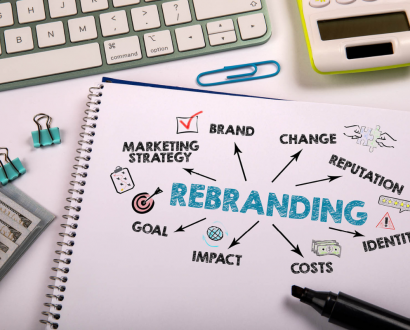The lessons you can learn from these rebranding fails

Custom Service Chemicals was a moderately successful startup in Newark, Delaware that specialized in the scientific analysis of various elements and compounds to help its clients develop new products. After four years, growth had plateaued, so its four founders wondered if it might attract more attention if it had a more dynamic, snappier name.
A brainstorming session was duly arranged and an ingenious solution devised. As they were in the sphere known as analyzing technologies, they figured why not simply adopt a shortened version of that? Thus, Analtech was born, soon becoming the butt of far too many juvenile jokes, but undeniably giving the firm the attention it had so craved.
And sadly, it hasn’t been alone in making an unfortunate branding decision.
Just ask the owners of Passmore Gas & Propane in Arizona, New York-based Amigone Funeral Home and Stubbs Prosthetics in Tennessee, all named for their proud founders.
Meanwhile Ayds Candy, a United States weight-loss chocolate snack, was doing perfectly well … until the early 1980s. In what became a cautionary tale for any CEO in denial about the need for a complete rethink, it dogmatically soldiered on until the end of the decade when it grudgingly rebranded to the arguably worse ‘Diet Ayds’ – and went out of business soon after.
Corporate history is littered with companies forced to modify their name, logo or brands for a variety of reasons. Some expertly executed the changes and reaped rewards, while others were so spectacularly disastrous that they followed Ayds Candy into ridicule and oblivion.
Both fates have crucial lessons that every business should heed, because brand names matter. Nearly 80 percent of consumers make purchases based on name alone, so it’s no wonder that three-quarters of S&P 100 companies thought the issue serious enough that they rebranded during their first seven years.
Don’t call me by your name

Some business and brand names simply become incompatible with a more inclusive and enlightened world, leading to a surge in so-called cancel culture.
In recent years, dozens have undertaken identity rethinks including Uncle Ben, Aunt Jemima, the Washington Redskins, Edmonton Eskimos and Dixie Chicks, to name just a few.
In Germany, Knorr decided in 2020 that its Gypsy sauce had racial overtones and would henceforth be known as Hungarian-style paprika sauce. In Australia, Coon cheese had been a leading brand of cheddar for 90 years until, finally in 2021, after years of protests and complaints, its owner was shamed into renaming it Cheer.
"All sorts of company names succeed and fail, so there are no rules or magic solutions." – Donald Miller
Such a bland, uninteresting name can be seen as a plus. When employees of United States private military contractor Blackwater killed 17 Iraqi civilians in 2007, its name was forever tarnished. A desperate rebranding to Xe Services was instigated followed by another pivot to Academi two years later, with then CEO Ted Wright declaring it was an attempt to appear more "boring".
The same tactic was deployed by the Lance Armstrong Foundation, a charity set up by its cycling superstar Founder to raise money for testicular cancer research. When the multiple Tour de France winner admitted that the peddling hadn’t been restricted to just bikes, it quietly morphed into the Livestrong Foundation.
Dunkin’ unhealthy names
Evolving attitudes to food and wellness can also cause issues. By 2018, Weight Watchers, the world’s most popular weight-loss organization, could see that conversations around calorie intake had shifted violently away from the word ‘diet’ and using bathroom scales to gauge success, to more body-positive terms like ‘wellbeing’ and ‘healthy living’.
In response, it shortened its name to WW International but, in doing so, seriously confused its customers, leading to its share price plunging 36 percent. Five years on, mentions of the new moniker are invariably followed by, "You know, Weight Watchers."
Issues with logos
Logos can also cause crises, though most are largely self-inflicted. Australian branding consultant Professor Mark Ritson told Marketing Week that the logo redesigns are "indulgent, unproductive and ultimately something that goes unnoticed by everyone except you".
When Uber unveiled its new, modern logo in 2016, it was ridiculed for resembling a sperm penetrating an egg.
Mastercard spent US$10 million updating its corporate symbol in 2006, but the new look was so jumbled and confusing, it soon reverted back to the old one. Four years later, Gap’s attempt at logo modernity lasted just six days before it was jettisoned.
Occasionally, stringent trade laws necessitate change, such as earlier this year when Toblerone had to take the famous Matterhorn symbol off its packaging and replace it with a more generic-looking peak after production moved from Switzerland to Slovakia.
As Marketing Performance President Robert Butt pointed out, a simple glance at Google Trends would have shown that searches for ‘weight loss’ were 20 times more popular than anything around health and wellness.
Similar concerns about a shifting consumption zeitgeist prompted United Kingdom breakfast cereal Sugar Puffs to become Honey Monster Puffs, sugar having replaced fat as the main nutritional villain. The word ‘fried’ is also deemed a big no-no, explaining why Kentucky Fried Chicken switched to simply using KFC. Even Dunkin’ Donuts became coy about unhealthy associations when it rebranded as Dunkin’ in 2018.
What’s in a name?
All of which emphasizes how important it is for startups to select the right name in the first place. Rob Meyerson, author of Brand Naming, says there are three aspects to selecting a strong one:
- Strategic: It’s distinctive, has meaning and is adaptable
- Creative: It looks and sounds good, and people remember it
- Technical: It’s easy to spell and pronounce, and legally available
It also pays not to plump for one that restricts future diversification. Steve Jobs and Jeff Bezos could have called their respective ventures Steve’s Personal Computers and Bargain Books Online, but wisely opted for less specificity.
The process is an inexact science, according to Donald Miller, bestselling author of Building a Story Brand and CEO of leading marketing consultancy Storybrand.
"If it’s possible to have your company name somehow speak to what you offer, you’ll spend less money educating the public about what you do." – Donald Miller
"All sorts of company names succeed and fail, so there are no rules or magic solutions," he tells The CEO Magazine. "Who could have predicted the success of a hospitality business called Airbnb, for example?"
Having advised dozens of multinational companies and startups, he says that being literal can be a good place to start.
"If it’s possible to have your company name somehow speak to what you offer, you’ll spend less money educating the public about what you do. Pizza Hut, Wheels Up, E-trade, U-Haul and many others come to mind."
It’s not all in the name
Even the most inspirational, witty and brilliantly clever brand name is worthless if what you’re selling is substandard, says Jeremy Miller, a Canadian branding guru and author of Brand New Name. In fact, a product with a terrible name can survive if customers love what they’re getting.
"Everyone has naming advice, especially when it comes to bad names and naming no-nos," the Sticky Branding Founder tells The CEO Magazine. "This is unquestionably false. Successful businesses create successful brands, and never the other way around. Your brand name’s important, but it won’t mean diddly if your product, service or business isn’t successful.
"If you want to create a brilliant brand, create a brilliant business. Success begets success."
"If you want to create a brilliant brand, create a brilliant business." – Jeremy Miller
That said, a great company with a great name has a far greater chance of achieving greatness.
"Names are like poetry," he says. "In a word or two you’re capturing the essence of your idea. It’s a simple phrase that contains so much meaning and has the power to stick in people’s minds."
Branded a failure
It’s a lesson that several corporations, whose rebrandings were slated, should have heeded, including xfinity (formerly Comcast), Insignia (the United Kingdom’s Royal Mail), Accenture (Anderson Consulting) and Altria (Philip Morris).
They can take some solace from Jessica Walsh, Founder of design agency Sagmeister & Walsh, who believes divisive names aren’t always a bad thing.
"If no-one hates it, no-one really loves it," she declares.
The most expensive rebranding exercise in history is said to be the US$1.2 billion that United States software behemoth Symantec paid after its acquisition of VeriSign in 2010. It claimed the enormous sum was justified as a tactical investment in positioning itself as a cutting-edge, future-focused innovator. Sadly, it only led to turmoil and an eventual takeover that required a whole new rebranding.
Luckily, Custom Service Chemicals didn’t fork out quite as much on its somewhat unfortunate identity revamp. In fairness to its founders, it continued to trade under its new name for some 50 years, perhaps proving the worth of an eye-catching brand, even one that sounds the occasional bum note.
Lost in translation
When naming a shiny, new product that will launch into overseas territories, some knowledge of language and local culture can be an advantage, as these firms found out.
- When Coca-Cola launched in China a century ago, its name translated as ‘Bite the wax tadpole’.
- Pepsi didn’t fare much better in Taiwan, where a billboard supposed to proclaim, ‘Come alive with the Pepsi generation’ actually said, ‘Pepsi brings your ancestors back from the dead’.
- The American Dairy Industry’s campaign slogan ‘Got milk?’ became ‘Are you lactating?’ in Latino markets.
- When Procter & Gamble launched Puffs tissues in Germany, no-one told it that the brand name was a slang term for ‘brothel’.